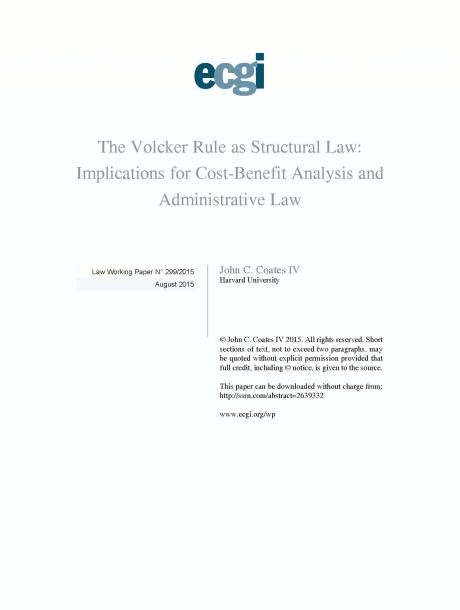
The Volcker Rule as Structural Law: Implications for Cost-Benefit Analysis and Administrative Law
Abstract
The Volcker rule ? a key part of Congress?s response to the financial crisis ? is best
understood as a ?structural law,? a traditional Anglo-American technique for governance of hybrid public-private institutions such as banks and central banks. The tradition extends much farther back in time than the Glass-Steagall Act, to which the Volcker Rule has been unfavorably (but unfairly) compared. The goals of the Volcker Rule are complex and ambitious, and not limited to reducing risk directly, but include reshaping banks? organizational cultures. Another body of structural laws ? part of the core of administrative law ? attempts to restrain and discipline regulatory agencies, through process requirements such as cost-benefit analysis (CBA). Could the Volcker rule be the subject of reliable, precise, quantified CBA? Given the nature of the Volcker rule as structural law, its ambitions, and the current capacities of CBA, the answer is clearly ?no,? as it would require regulators to anticipate, in advance of data, private market behavior in response to novel activity constraints. If administrative law is to improve regulatory implementation of structural laws such as the Volcker Rule, better fitting and more nuanced tools than CBA are needed.






